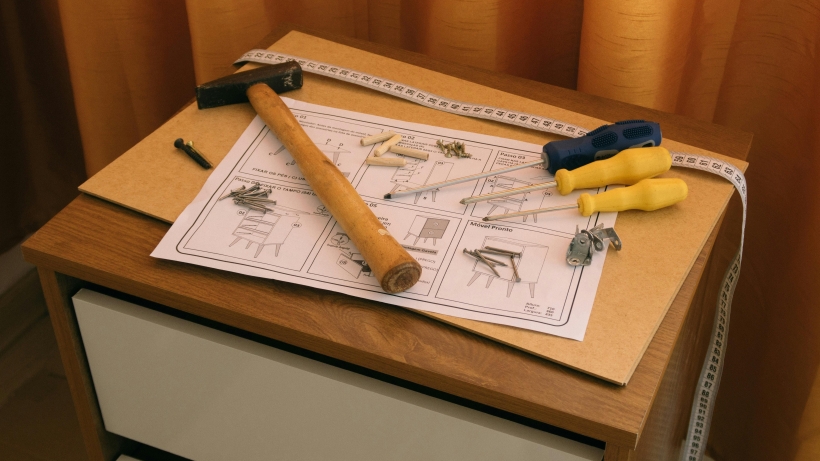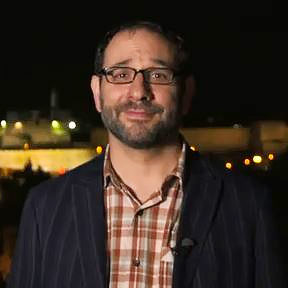 Our tradition tells us that Torah can sometimes feel that way. At first glance, it can seem too vast, too complex, or too distant for us to grasp fully. However, Parshat Nitzavim reminds us otherwise: Torah is not unreachable; it is close, accessible, and waiting for us to live it.
In Nitzavim, Moses gathers all of Israel—leaders, elders, children, strangers, laborers—to stand together and renew the covenant with God. The portion stresses collective responsibility, not only of those present, but also of future generations bound to this covenant. It speaks of return (teshuvah) and ends with the stirring message that life and death, blessing and curse are before you. We are to choose life so that we and our descendants may live.
In the heart of this portion, we find a passage of great reassurance: “Lo bashamayim hi . . .”
“It is not in heaven . . . it is not beyond the sea . . . but very near to you, in your mouth and in your heart, to do it.” (Deut. 30:11–14)
This teaching is the foundation for the blessing La’asok B’divrei Torah. “Blessed are you . . . who commands us to engage in words of Torah.” We do not bless God for completing Torah, or for mastering Torah, but for engaging in it. The blessing affirms that the work is not about perfection, but about participation. Torah is ours to wrestle with, to question, to study, and to live.
This resonates deeply with the declaration of our ancestors at Sinai: “Na’aseh v’nishma.” We will do, and we will understand. The Israelites promised to engage in Torah through action first, trusting that deeper understanding would follow. Just as Nitzavim says Torah is already in our mouths and hearts, na’aseh v’nishma reminds us that through living Torah, we bring it closer. It becomes accessible not just intellectually, but spiritually and communally.
Parshat Nitzavim comes to us each year right before Rosh Hashanah, as we stand on the threshold of a new year. It challenges us to see Torah not as an intimidating mountain or a distant ocean, but as something already within our grasp. It is already in our hearts and mouths, waiting for us to do it.
Our tradition tells us that Torah can sometimes feel that way. At first glance, it can seem too vast, too complex, or too distant for us to grasp fully. However, Parshat Nitzavim reminds us otherwise: Torah is not unreachable; it is close, accessible, and waiting for us to live it.
In Nitzavim, Moses gathers all of Israel—leaders, elders, children, strangers, laborers—to stand together and renew the covenant with God. The portion stresses collective responsibility, not only of those present, but also of future generations bound to this covenant. It speaks of return (teshuvah) and ends with the stirring message that life and death, blessing and curse are before you. We are to choose life so that we and our descendants may live.
In the heart of this portion, we find a passage of great reassurance: “Lo bashamayim hi . . .”
“It is not in heaven . . . it is not beyond the sea . . . but very near to you, in your mouth and in your heart, to do it.” (Deut. 30:11–14)
This teaching is the foundation for the blessing La’asok B’divrei Torah. “Blessed are you . . . who commands us to engage in words of Torah.” We do not bless God for completing Torah, or for mastering Torah, but for engaging in it. The blessing affirms that the work is not about perfection, but about participation. Torah is ours to wrestle with, to question, to study, and to live.
This resonates deeply with the declaration of our ancestors at Sinai: “Na’aseh v’nishma.” We will do, and we will understand. The Israelites promised to engage in Torah through action first, trusting that deeper understanding would follow. Just as Nitzavim says Torah is already in our mouths and hearts, na’aseh v’nishma reminds us that through living Torah, we bring it closer. It becomes accessible not just intellectually, but spiritually and communally.
Parshat Nitzavim comes to us each year right before Rosh Hashanah, as we stand on the threshold of a new year. It challenges us to see Torah not as an intimidating mountain or a distant ocean, but as something already within our grasp. It is already in our hearts and mouths, waiting for us to do it.
Torah, Step by Step
Have you ever had a task that seemed overwhelming until you actually started doing it, only to discover it wasn’t as hard as you feared? Maybe it was assembling a piece of furniture, running your first 5K, or trying a new recipe. The thought of the work can feel daunting, but when you take it one step at a time, the path forward often becomes less treacherous than expected.
 Our tradition tells us that Torah can sometimes feel that way. At first glance, it can seem too vast, too complex, or too distant for us to grasp fully. However, Parshat Nitzavim reminds us otherwise: Torah is not unreachable; it is close, accessible, and waiting for us to live it.
In Nitzavim, Moses gathers all of Israel—leaders, elders, children, strangers, laborers—to stand together and renew the covenant with God. The portion stresses collective responsibility, not only of those present, but also of future generations bound to this covenant. It speaks of return (teshuvah) and ends with the stirring message that life and death, blessing and curse are before you. We are to choose life so that we and our descendants may live.
In the heart of this portion, we find a passage of great reassurance: “Lo bashamayim hi . . .”
“It is not in heaven . . . it is not beyond the sea . . . but very near to you, in your mouth and in your heart, to do it.” (Deut. 30:11–14)
This teaching is the foundation for the blessing La’asok B’divrei Torah. “Blessed are you . . . who commands us to engage in words of Torah.” We do not bless God for completing Torah, or for mastering Torah, but for engaging in it. The blessing affirms that the work is not about perfection, but about participation. Torah is ours to wrestle with, to question, to study, and to live.
This resonates deeply with the declaration of our ancestors at Sinai: “Na’aseh v’nishma.” We will do, and we will understand. The Israelites promised to engage in Torah through action first, trusting that deeper understanding would follow. Just as Nitzavim says Torah is already in our mouths and hearts, na’aseh v’nishma reminds us that through living Torah, we bring it closer. It becomes accessible not just intellectually, but spiritually and communally.
Parshat Nitzavim comes to us each year right before Rosh Hashanah, as we stand on the threshold of a new year. It challenges us to see Torah not as an intimidating mountain or a distant ocean, but as something already within our grasp. It is already in our hearts and mouths, waiting for us to do it.
Our tradition tells us that Torah can sometimes feel that way. At first glance, it can seem too vast, too complex, or too distant for us to grasp fully. However, Parshat Nitzavim reminds us otherwise: Torah is not unreachable; it is close, accessible, and waiting for us to live it.
In Nitzavim, Moses gathers all of Israel—leaders, elders, children, strangers, laborers—to stand together and renew the covenant with God. The portion stresses collective responsibility, not only of those present, but also of future generations bound to this covenant. It speaks of return (teshuvah) and ends with the stirring message that life and death, blessing and curse are before you. We are to choose life so that we and our descendants may live.
In the heart of this portion, we find a passage of great reassurance: “Lo bashamayim hi . . .”
“It is not in heaven . . . it is not beyond the sea . . . but very near to you, in your mouth and in your heart, to do it.” (Deut. 30:11–14)
This teaching is the foundation for the blessing La’asok B’divrei Torah. “Blessed are you . . . who commands us to engage in words of Torah.” We do not bless God for completing Torah, or for mastering Torah, but for engaging in it. The blessing affirms that the work is not about perfection, but about participation. Torah is ours to wrestle with, to question, to study, and to live.
This resonates deeply with the declaration of our ancestors at Sinai: “Na’aseh v’nishma.” We will do, and we will understand. The Israelites promised to engage in Torah through action first, trusting that deeper understanding would follow. Just as Nitzavim says Torah is already in our mouths and hearts, na’aseh v’nishma reminds us that through living Torah, we bring it closer. It becomes accessible not just intellectually, but spiritually and communally.
Parshat Nitzavim comes to us each year right before Rosh Hashanah, as we stand on the threshold of a new year. It challenges us to see Torah not as an intimidating mountain or a distant ocean, but as something already within our grasp. It is already in our hearts and mouths, waiting for us to do it.
 Our tradition tells us that Torah can sometimes feel that way. At first glance, it can seem too vast, too complex, or too distant for us to grasp fully. However, Parshat Nitzavim reminds us otherwise: Torah is not unreachable; it is close, accessible, and waiting for us to live it.
In Nitzavim, Moses gathers all of Israel—leaders, elders, children, strangers, laborers—to stand together and renew the covenant with God. The portion stresses collective responsibility, not only of those present, but also of future generations bound to this covenant. It speaks of return (teshuvah) and ends with the stirring message that life and death, blessing and curse are before you. We are to choose life so that we and our descendants may live.
In the heart of this portion, we find a passage of great reassurance: “Lo bashamayim hi . . .”
“It is not in heaven . . . it is not beyond the sea . . . but very near to you, in your mouth and in your heart, to do it.” (Deut. 30:11–14)
This teaching is the foundation for the blessing La’asok B’divrei Torah. “Blessed are you . . . who commands us to engage in words of Torah.” We do not bless God for completing Torah, or for mastering Torah, but for engaging in it. The blessing affirms that the work is not about perfection, but about participation. Torah is ours to wrestle with, to question, to study, and to live.
This resonates deeply with the declaration of our ancestors at Sinai: “Na’aseh v’nishma.” We will do, and we will understand. The Israelites promised to engage in Torah through action first, trusting that deeper understanding would follow. Just as Nitzavim says Torah is already in our mouths and hearts, na’aseh v’nishma reminds us that through living Torah, we bring it closer. It becomes accessible not just intellectually, but spiritually and communally.
Parshat Nitzavim comes to us each year right before Rosh Hashanah, as we stand on the threshold of a new year. It challenges us to see Torah not as an intimidating mountain or a distant ocean, but as something already within our grasp. It is already in our hearts and mouths, waiting for us to do it.
Our tradition tells us that Torah can sometimes feel that way. At first glance, it can seem too vast, too complex, or too distant for us to grasp fully. However, Parshat Nitzavim reminds us otherwise: Torah is not unreachable; it is close, accessible, and waiting for us to live it.
In Nitzavim, Moses gathers all of Israel—leaders, elders, children, strangers, laborers—to stand together and renew the covenant with God. The portion stresses collective responsibility, not only of those present, but also of future generations bound to this covenant. It speaks of return (teshuvah) and ends with the stirring message that life and death, blessing and curse are before you. We are to choose life so that we and our descendants may live.
In the heart of this portion, we find a passage of great reassurance: “Lo bashamayim hi . . .”
“It is not in heaven . . . it is not beyond the sea . . . but very near to you, in your mouth and in your heart, to do it.” (Deut. 30:11–14)
This teaching is the foundation for the blessing La’asok B’divrei Torah. “Blessed are you . . . who commands us to engage in words of Torah.” We do not bless God for completing Torah, or for mastering Torah, but for engaging in it. The blessing affirms that the work is not about perfection, but about participation. Torah is ours to wrestle with, to question, to study, and to live.
This resonates deeply with the declaration of our ancestors at Sinai: “Na’aseh v’nishma.” We will do, and we will understand. The Israelites promised to engage in Torah through action first, trusting that deeper understanding would follow. Just as Nitzavim says Torah is already in our mouths and hearts, na’aseh v’nishma reminds us that through living Torah, we bring it closer. It becomes accessible not just intellectually, but spiritually and communally.
Parshat Nitzavim comes to us each year right before Rosh Hashanah, as we stand on the threshold of a new year. It challenges us to see Torah not as an intimidating mountain or a distant ocean, but as something already within our grasp. It is already in our hearts and mouths, waiting for us to do it.



